Common Misapplications of Basic Cooking Techniques... PART 1
- Chef Savant

- May 7, 2020
- 6 min read
Updated: Jun 5, 2020
Have you ever tried cooking one of your favorite dishes at home, to have it not turn out right, without you knowing why? Maybe you were making something as like spaghetti noodles or fried chicken, but for some reason the noodles came out too gummy or the chicken was too dark on the outside and too undercooked in the middle. We’ve all been there at one point, thinking we were doing everything right only to have the food turn out so very wrong. Chances are, we may have made a few common misapplications of a few cooking techniques, which happens even to professionals.
Well, to help unravel some of those misapplications, we’re going to attempt a brief discussion that will hopefully shed a little light on a few of the more, common mistakes. Understanding how foods respond under certain heat intensities and the time duration of can make a big difference in which cooking methods to apply in order to maximize your results, once you prepare to start cooking.
We want to disclose that we won’t go over ALL of the cooking techniques, just some of the more common ones used in everyday cooking. Our goal is simply to help you understand how they should be applied and some of the misapplications that cause them to go wrong in their use. That said, we’ll begin with Roasting!
Roasting
Roasting is a technique that is generally done at a higher heat intensity than baking, allowing it to develop caramelization and flavors through a process often referred to as browning. The browning affect is kind of the crossroads where flavors and texture overlap. Another of the differences between Baking and Roasting is that the heat and moisture levels of baking react differently with yeast and binders, within a dough, which is well illustrated with foods like cookies, breads, and pies, etc. and other foods that react with the heat to rise and become set, the way a cake does or rolls, after they’ve been proofed.
Roasting, however, doesn’t allow foods to set the way baking does, because the heat intensity is too high. That said, you can often find that, casseroles and certain chicken recipes will refer to a baking process, meaning that they’re to be cooked for a longer time, and with less heat intensity, to allow other properties to develop within said dish.
Like sautéing, one misapplication of roasting comes from, crowding foods onto a pan, causing them to steam instead of roast, which can lend to their becoming gummy and even bitter. Another misapplication of roasting is trying to roast an item that is too large with too much heat intensity, too fast. While it is true that large items can be roasted (i.e. roasted turkeys, or roast beef, pork roasts, etc.) it cannot be overlooked that the heat ratio, in relation to the size of the roast, has to be adjusted to allow for internal doneness, less you become sick from food poisoning, by eating undercooked food. The lesson here, would be to know that smaller foods will cook faster, and will work well with higher heat applications, while larger items with more “mass” may require cooking in phases, (i.e. a baking phase, and a roasting/browning phase).
In terms of vegetables, roasting has become a very popular method because of the bold flavors and varying textures developed from the browning. This process basically caramelized the sugars in the veggies to bring out a signature sweet or sometimes savory quality, resulting in an unrivaled diversity of the flavors.
Grilling
Grilling is another method that uses high heat. Sealing in the moisture and branding the pattern of the grill grates into fibers and proteins with sizzling intensity. When done right, the foods are juicy, smoky, and have just a hint of ash/char that cannot be achieved by any other cooking method.
The confusion and misapplication lies in how much heat to use for a particular item. Putting foods over heat that too high will cause them to stick and tear on the grill. However, understanding when and how to use high heat can have its advantages. For instance, if you need quick grill marks for grilling breads, fruit or vegetables, high heat can be a good thing. Note you don’t want FLAMES, just the high heat intensity.
Flames are generally caused by the drippings from whatever you grilling. As some foods use a liquid based seasoning for marinading, once those juices heat up and begin to drip, they smoke and in some cases flame up. While the smoke itself can infuse flavors into your food, it can also cause FLAMES to discolor your food, tainting the flavor in a way that can become bitter as your food rests/cools.
Chefs will often refer to areas on the grill as temperature zones based on the heat intensity of each space. These zones are then designated for cooking at different rates which allows them to achieve the perfect doneness without drying the food out. Basically what this translates into, is identifying the hot spots on the grill that cooks things a little faster than others. Along with this, identifying the more moderately heated areas is just as important because they can be used for keeping things warm or for transitioning items to keep them from over cooking. Finding and controlling the heat levels, allows you to better time your food so that you’ll know when to take it off the heat.
Sautéing
Sautéing is an excellent method to achieve quick caramelization by developing flavors. It requires medium to high heat, and uses just a little fat/oil to keep foods from sticking to the pan so they can move briskly without burning.
Like Roasting, this goes wrong when the pan is over crowded with food, causing a surplus of moisture to become trapped resulting in steaming the food instead of giving it sizzle. Additionally when food is bunched in the pan, the steam impedes caramelization and can cause the foods to become limp and soggy. Anther misapplication is when the heat intensity is too high, causing your food to scorch and develop a slightly burnt flavor instead of a well rounded finish.
For all intents and purposes, sautéing can be broken into 3 basic temperature categories.
Higher heat which is sometimes referred to as toasting.
Sautéing on lower temperatures, which can be considered pan roasting.
And right in the middle, is where the “sizzling” of sautéing happens. (Medium - Medium High heat)
Toasting is a method usually used for nuts, bread crumbs, dry spices, and grains. The medium to high heat level helps these items cook evenly and quickly. This in turn seals the flavors while allowing the oils/sugars to caramelize just enough to take in a little added dimension.
Pan toasting certain spices or grains can also help bring out some of the underlying flavors in a way that gives them more punch and a robust finish. When done with the right heat intensity, the trace oils become super charged, making them extra flavorful.
Pan Toasting vs Dry Sautéing
Understanding the minutia between the differences of pan toasting and dry sautéing can be a bit confusing if you’re not up for the challenge. For all intents and purposes, this is simply a play on words, because the technicalities between these methods are so small, the average cook wouldn’t really bother learning the difference.
Just to give you aglimpse of what we mean imagine toasting a piece of bread. If you prefer your toast really dark and dry, you simply use more heat; but, if you prefer your toast slightly crisp with a little chew to the bite, you’ll use less heat. So when toasting spices or grains, the real difference will be determined by the intensity of the heat and how long you leave them in the pan. Remember, keeping your items moving quickly over high heat, are the basic rules of sautéing.
Pans toasting (also done over medium to high heat) develops more flavor in smaller items that are already dry i.e. whole spices, grains, nuts, etc. As mentioned earlier, the general rule to sautéing usually involves adding some type of fat/oil, to keep things from sticking to the pan, whereas a dry sauté does not, because it utilizes the existing oils within the items being toasted, By gently pulling them to the surface and using this developing flavor. (Again, this is only a rule of thumb). Larger batches of smaller items may, in fact, require a little oil over a lower heat on order to avoid over caramelization and the developing of bitter flavors along with much frustration if your not careful. Sounds a bit confusing right? Exactly...
Conclusion
In the follow up article, we’ll discuss additional cooking methods that are used to make great food but, at times, can also be misunderstood and misapplied. Before we go further though, we’ll take a pause here to give you a little time to sort through and re-try the above porcesses first. Remember, each method needs to be managed appropriately in order to maximize your results for the desired outcome...
Caramelization/Browning during the Roasting process develops flavor. Understanding how to use the hotspots on the Grill to create, and manipulate the smoke from the process is another fantastic way to capture flavor. And finally, a good Sauté can ensure that you maintain a great balance between textures and great seasonings.
So now, with your new and improved understanding, why not pull out you favorite table settings, and try your hand at re-inventing some of your old recipes. And when you do, drop us a line and let us know how things turn out! We can’t wait to hear back from you!











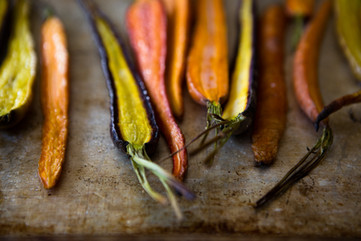









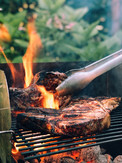

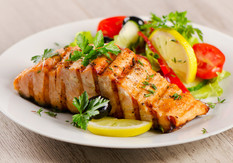







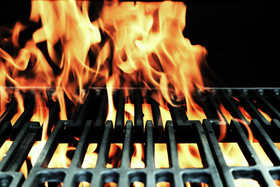













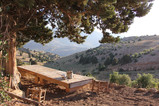











Comentarios